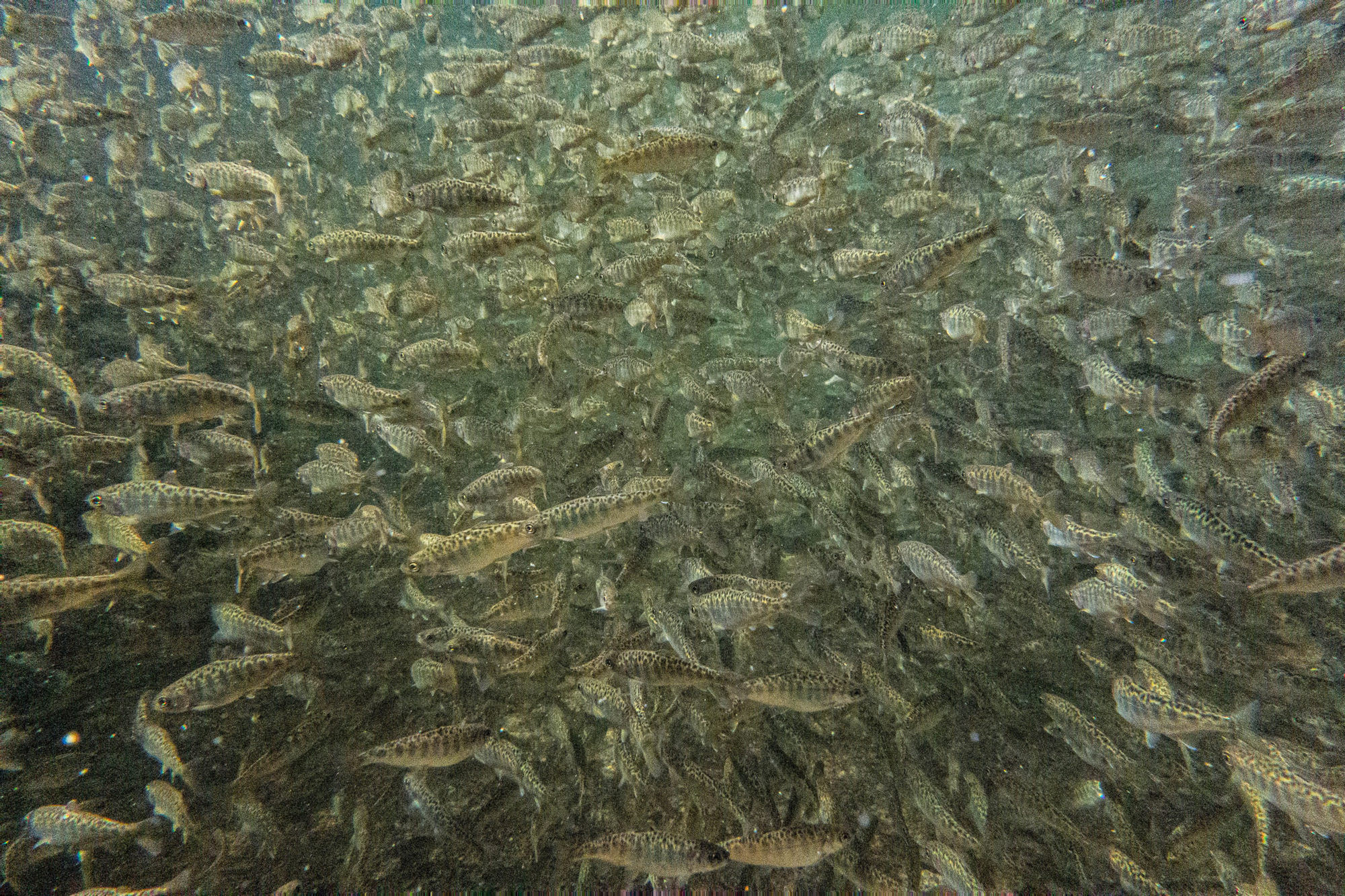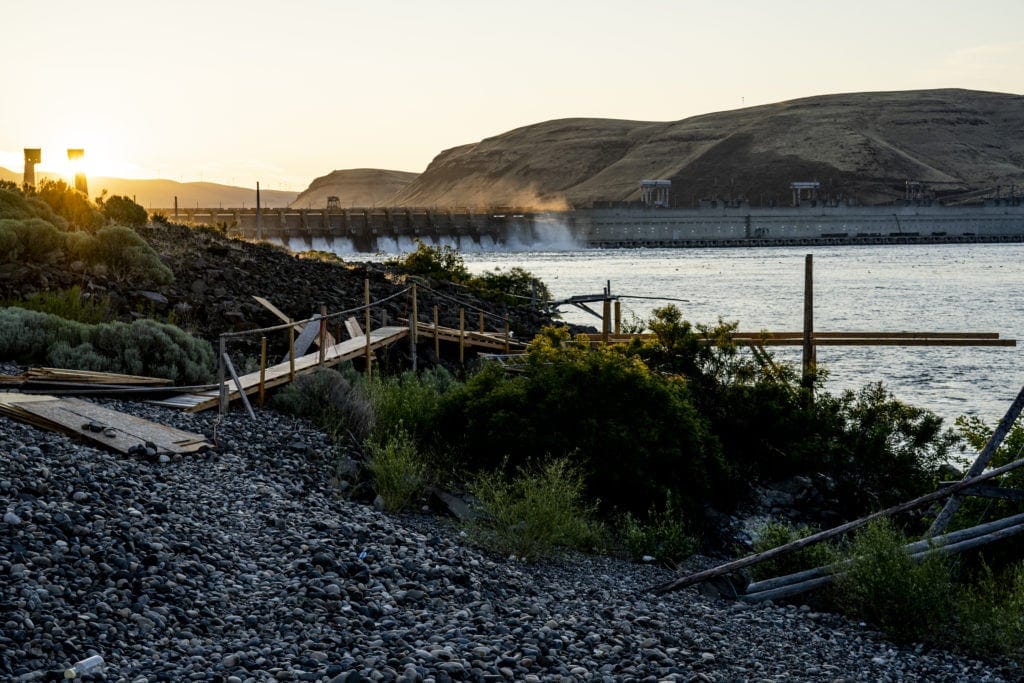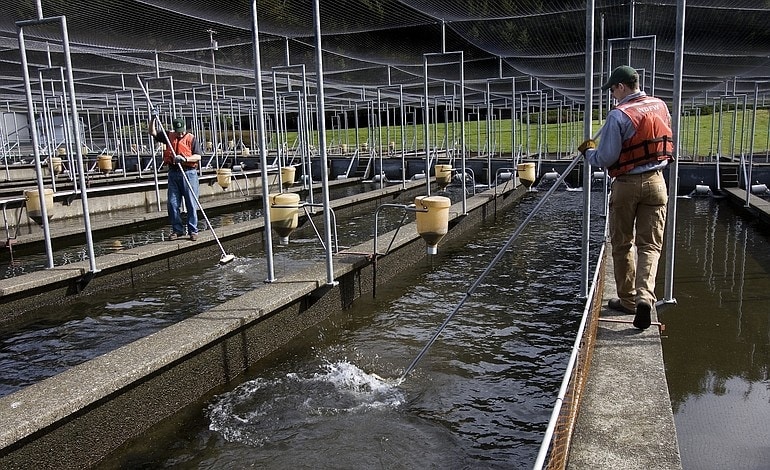
In a sparsely attended public meeting of the “Fish Committee” in early August 2020, a select group of Washington Fish and Wildlife Commissioners were re-writing the principles of fish hatchery policy in the Columbia River Basin, Olympic Peninsula streams, and watersheds of Puget Sound. While public comment was not on the agenda, several sport and commercial fishing constituents voiced their strong support for increasing the number of artificially produced fish throughout the state. Only one person testified in opposition to the draft policy and the opaque process being conducted by the committee.
The hatchery versus wild debate has plagued policy-making for the past three decades, proving to be one of the most divisive issues in northwest fisheries management. Since scientists throughout the Pacific Northwest started comparing regional data and speaking out with concern, the merits of hatcheries has been a controversy like that of wolf reintroduction and climate change. In 1991, a landmark paper “Pacific Salmon at the Crossroads” was published, calling into question the previous 110 years of artificial spawning and rearing of fish, and the fisheries dependent on that system. The authors explained the need for “a new paradigm that advances habitat restoration and ecosystem function rather than hatchery production” for salmon and steelhead to survive and prosper into the next century, and they had the science to support their claim.
After the Endangered Species Act listings of the late 1990’s, the controversial nature of hatcheries drove a wedge in communities grappling with their role in and relationship to the risk of extinction. People dependent on hatchery fish, or working in industries which continue to degrade habitat, were pitted against those calling for the restoration of naturally produced fish and the ecosystems that support them. As tensions escalated between those perspectives, congress stepped in and created the Hatchery Scientific Review Group (HSRG) in 2000. This independent science panel would consult the best available science and develop recommendations to help guide the reform efforts in a manner that “minimized” the potential for adverse genetic and ecological impacts on wild salmon and steelhead populations. Click here to see the full list of ESA-listed fish species on the West Coast.
The need for comprehensive reform was obvious, with hatchery budgets ballooning, additional fish populations being listed under the ESA as threatened and endnagered, and fisheries being closed. The justification for artificial production was changing from an exclusive focus on generating fish to harvest, to include new efforts to use hatcheries as “safety net” (or what some people call “conservation” hatchery) programs designed to keep the last remaining fish from being extirpated.

The first regional review initiated by the HSRG were the hatcheries of Puget Sound in 2004. Subsequently, the entire Columbia River Basin in 2009 was analyzed. This was one of the first efforts to examine how the complex landscape of federal, state, local and tribal hatcheries were interacting and operating, and how many of those hatcheries were meeting scientific and policy standards in the context of the Endangered Species Act. While not a perfect solution, the HSRG’s guidelines charted a path for reducing our dependence on artificial production and reducing their adverse impacts on wild populations– and created hatchery standards for states like Washington to incorporate into their fish and wildlife policy.
In 2009, these guidelines, and the scientific justifications behind them, were accepted by the Washington Fish and Wildlife Commission and incorporated in the Hatchery and Fishery Reform Policy (C-3619). The adoption of the HSRG principles, guidelines, and goals was foundational to the strategy of the policy, with set thresholds and time-based goals to achieve the intended goal of fish recovery. It would take time, but the policy called for implementation assessments, and policy evaluations to check progress along the way.

Fast forward to 2018, to a last minute vote of the new members of the Washington Fish and Wildlife Commission and a surprise move to strike key principles, standards, and recommendations of the HSRG without full public review. The Commission called for a new review of the science supporting the management decisions, and directed the department to change their tune, by incorporating the positive value of hatchery programs within the policy language. The decision to suspend the HSRG hatchery reform guidelines before the review was completed suggested an inherent bias against the HSRG.
In response to the Commission’s decision, WFC joined over 70 fisheries scientists and advocates in urging Washington Governor Jay Inslee to call upon the Commission to immediately reinstate the suspended policy guidelines until the review of the policy was completed by a true independent process. An excerpt from that letter:
“We do not understand why the Fish and Wildlife Commission suddenly without a full public review, decided to ignore the best available science and not utilize independent scientists, the Hatchery Science Review Group, to ensure that the state’s hatcheries are managed consistent with the needs of wild fish. It is not only a dangerous precedent regarding the management of our state’s fish and wildlife, it is as short sighted as ignoring the science of climate change.”
At the same time, a letter to the Washington legislature from five former Fish and Wildlife Commissioners raised concerns that the progress made through the initial reform policy was being reversed, and that the proposed changes represented an abandonment of science-based policy. These were the same Commissioners responsible for developing and approving the Hatchery and Fishery Reform Policy in 2009.
Still to date, only a small number of people have been involved in the Commission’s decision-making process, seemingly paving the way for increases in hatchery production thought to be able to bring back prey for apex predators like endangered Southern Resident killer whales, and the fishing industry. However, the Commission-mandated science review doesn’t support a move away from the existing hatchery and fishery reform standards, and the implementation report doesn’t show positive progress made towards implementing the hatchery and fishery reform policy WDFW adopted in 2009. At the same time, WDFW is grappling with a $30.8 million cut to its operational services, with the proposed closure of several hatcheries throughout the state.
Wild Fish Conservancy has been concerned from the start about this process to undermine hatchery and fishery reform science and weaken policy from the start. We’ve participated in the stakeholder listening sessions, provided testimony at public meetings, signed onto letters from concerned fisheries scientists and advocates. We’ve written to legislators about the value of science-based fisheries management and submitted a letter requesting that HSRG guidelines be reinstated. Now, we are calling for the policy development to be suspended while a better public process can be put into place that heeds best available science and does not undermine Washington’s efforts to recovery wild salmon and steelhead.
Join our mailing list to recieve important updates on our work, the latest wild fish news, & opportunities to take action to support wild fish.
This site is protected by reCAPTCHA and the Google Privacy Policy and Terms of Service apply.
Wild Fish Conservancy is recognized as a 501(c)3 non-profit by the IRS